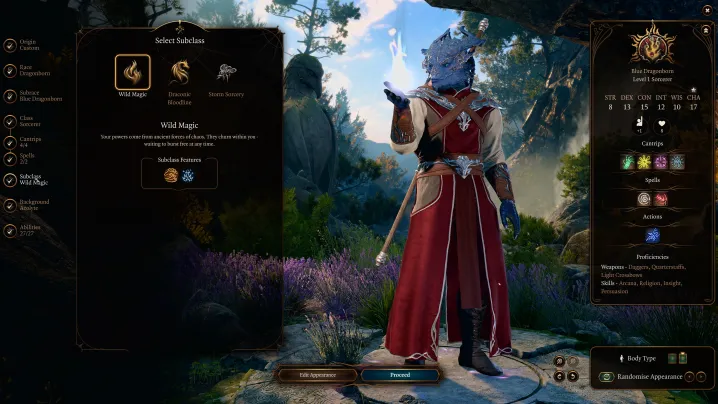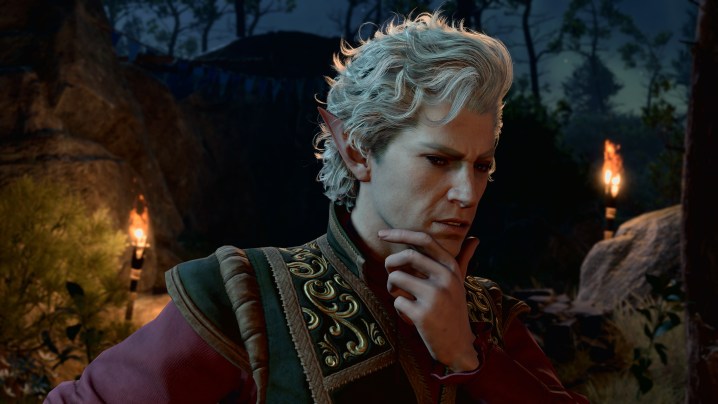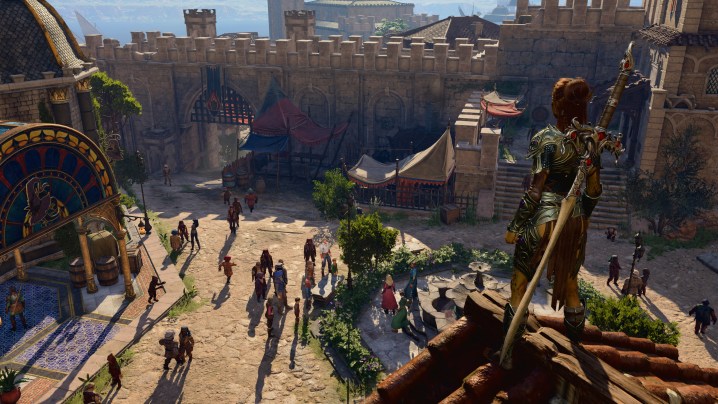With Baldur’s Gate 3 now out, I can’t help but feel a surge of excitement. A game that I have been playing, –and loving — since its early access back in 2020 is finally in the hands of the general public. Its reception is overwhelmingly positive and it is truly great to see people sink their teeth into such a fascinating and complex game. That is, if they aren’t too intimated to start.
Computer role-playing games (CRPGs) are notorious for being a complicated and daunting genre, especially one like this that draws so heavily on Dungeons & Dragons rule sets. I couldn’t blame anyone unfamiliar with the genre who just feels too intimidated by its scope. That being said, don’t let Baldur’s Gate 3 scare you off; this is the best introduction to CRPGs ever made.
Start small, start slow
The CRPG genre has a bad reputation for being unwieldy for new players thanks to all of the intricate layers of systems that tend to populate them. You usually have to deal with spells, weapon attacks, environmental stats, verticality, and so much more. It can give a new player stage fright as soon as they are given control of their character. Baldur’s Gate 3, on the other hand, does an excellent job of onboarding new players to the genre with its streamlined rules and systems.
During combat, everything you could possibly do is distilled down to four categories: Action, Bonus Action, Movement, and Reaction. If you want to do something substantial on your turn (like attack), it will cost you an Action. Something small will be a Bonus Action, while Movement is self-explanatory. Reactions are a bit different, as they only happen on someone else’s turn rather than that character’s. Most classes will get only one of each per round of combat, so players generally only have to worry about two actions and movement on their turn and a potential Reaction, as a treat.
While this system gets added on later in the game, the core stays the same. Like Dungeons and Dragons 5th Edition, the system that Baldur’s Gate 3 is based on, the game follows a simple rule: “Start small and start slow.” In both Baldur’s Gate 3 and 5th Edition, players start with only a few options for spells and abilities. Those wanting to roleplay as a powerful wizard at level one need to get comfortable with the idea of mainly casting cantrips for a long time. In the beginning, spell resources are low but still show the players how impactful they are. Physical attacks may be weak, but they’re still a reliable and consistent source of damage.
Any character’s first three levels are meant to help you understand the main mechanics of a particular class. That lets players understand the full breadth of what they can do piece by piece, rather than tossing everything at them all at once. It’s a crucial design decision that eases players into a complicated system.
Now for something completely different
Baldur’s Gate 3 will take the average player about 100 hours to complete. That’s pretty standard for CRPGs, considering Larian Studios’ previous game, Divinity: Original Sins II, was about the same length. That means you’re going to spend a long time with your character with their abilities and stats — 100 hours to regret your choices.
Though a major piece of Baldur’s Gate 3‘s player friendliness is that Larian Studios gives players an option to reclass early on. You cannot change your appearance, but your ability points, subclass, and class are all available for a shake-up. Not enjoying the fact that your wizard dies every time they get hit in the face with an ax? Turn them into a barbarian and have them eat axe blows for breakfast, lunch, and dinner.

The reclass option is also available for your entire party. Tired of Shadowheart not pulling her weight? Swap out her subclass to the Life domain so she can be a better support, or make her a paladin so she can properly stay in the frontlines. This reclass option only takes 100 gold to do which means you can do this early and often.
It never feels great to be stuck with certain choices when playing a game, especially one as expansive and long as this. Many CRPGs, like Pillars of Eternity, can feel like you need to craft the perfect character from the start in order to perform well. That’s a daunting task that can make long runs feel like lost causes, scaring players away. That’s not the case here. The flexibility makes it more comfortable to test out builds or correct mistakes during a level-up. Just make sure you’re okay with your facial hair choices. You can’t fix those.
All the world is a stage
Most CRPGs tend to keep players at arm’s length when it comes to storytelling. Their isometric views along with hours of silent dialogue can make players feel disconnected from what’s going on. Baldur’s Gate 3 flips that tradition on its head, though, going to incredible lengths to make the game feel more cinematic. Flashy cutscenes help that case, but what’s more impactful are the subtle ways the game keeps players invested in its characters and plot.
Most dialogue in Baldur’s Gate 3 is fully voice-acted, which is a surprise for the genre. Even the random druids and tieflings in the Emerald Grove that literally have one line are voiced. When talking to a character, the camera zooms in for a more dynamic angle so you are not just having a conversation thirty feet up in the air. Character animations are diverse and charming too. The way Shadowheart gestures with her hands when she is annoyed, or the way Astarion literally sticks his nose up in the air when he wants to be stuffy makes them ooze with character.

All of that makes it easier to get invested in characters rather than seeing them as an assortment of stats and skills to use in battle. It gives us an extra reason to care when Lae’zel is talking about her people and culture because she as a character cares. That enthusiasm is infectious and makes me want to learn more about this world.
CRPGs have always had a rough reputation for inviting new players to this scene. The genre is right up there with real-time strategy games as downright daunting to approach. Larian Studios has gone to impressive lengths to change that narrative, creating a massive and complex game that can span hundreds of hours. It’s a feat that will hopefully open a “niche” genre up to the world — and if Steam stats are anything to go by, it’s working already.
Baldur’s Gate 3 is available now on PC. It’s coming to PS5 on September 6.




